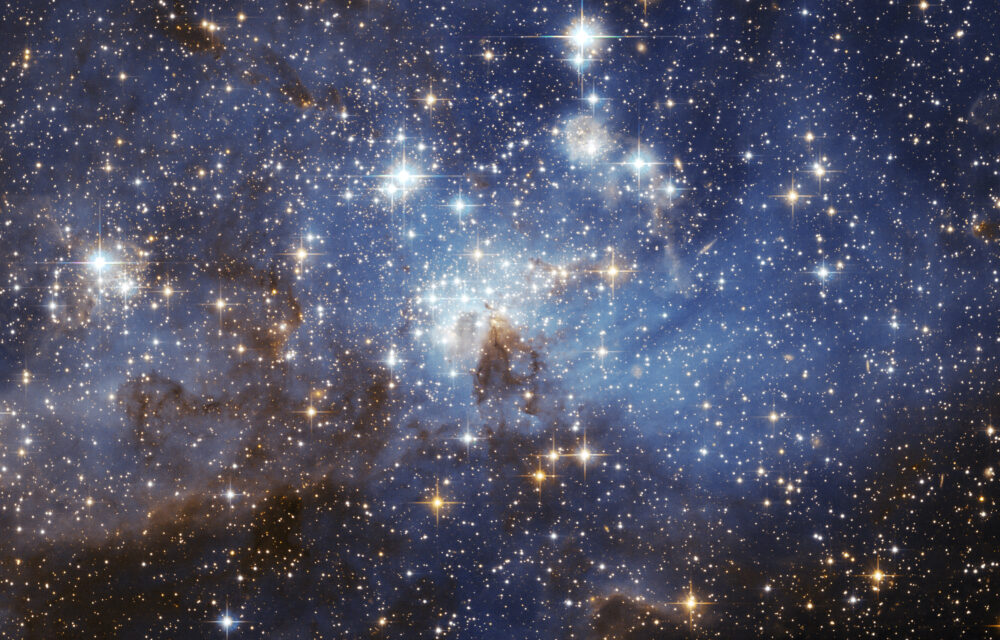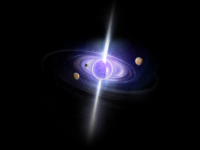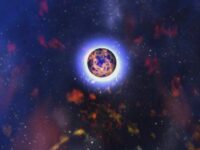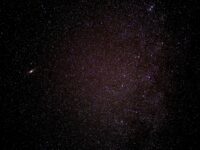In 1997, the NASA Hubble telescope discovered that there existed stars without a tie to a specific galaxy, a finding that shook the scientific community. These stars were located in the region of the Virgo supercluster, an area of space containing around 2,000 galaxies. They were around 300,000 lightyears away from the nearest galaxy and lacked a gravitational tie to any regions in the area.
These types of stars, called intergalactic or rogue stars, do not belong to a certain galaxy and therefore dwell in the void between them. However, they haven’t always been like this, as stars cannot be formed in intergalactic space. Instead, they were formed in a galaxy and stayed there until a major event ripped them away.
One of these events is an extreme interaction between two galaxies, like a collision or a merge. This is more likely to result in the formation of a rogue star if the star’s home galaxy is lightweight. Another possible event is an encounter with a supermassive black hole. If a star veers too close to a black hole, it sends the star into a state of hypervelocity. Speeds of hyper-velocity stars can reach up to 1.6 million miles per hour; for context, that’s 2,700 times the velocity of an airplane. In this state, the star rushes out of the galaxy, losing its gravitational tie.
“The discovery of these rogue stars has forced astronomers to think outside the box.”
Before, it was impossible to trace back the origins of these intergalactic stars. However, new emerging research techniques have made it possible to discover the home galaxies of rogue stars. By matching the chemical composition of the exiled star to the chemical attributes of nearby galaxies, scientists are able to accurately determine where the star originated. Since then, researchers at Vanderbilt University have discovered that around 700 rogue stars originated in the Milky Way and were ejected from the galaxy after traveling too close to its central black hole.
These researchers chose what stars to look at in depth by their red colorization, indicating that the star originated from the inner galaxy. This makes sense considering black holes are located in the centers of galaxies; as the stars made contact with this black hole, they were then flung from the center and lost the gravitational tie to that galaxy. It’s predicted that one star is ejected from the Milky Way every 100,000 years. These types of stars that roam the void between galaxies may sound like abnormalities, but they are not. In fact, around half of the stars in the universe aren’t tied to a galaxy. About 10% of the mass of the Virgo cluster of galaxies, the cluster where the Hubble telescope first discovered intergalactic stars, is composed of these rogue stars.
Intergalactic floating stars are not the only planetary objects lacking gravitational ties; a 2011 study from the University of Notre Dame discovered rogue planets floating in intergalactic space, also lacking a tie to a particular galaxy. Rogue planets can be ejected in a similar fashion to intergalactic stars, through a collision with a nearby entity, and they can form through the gravitational collapse of gas, similar to how normal stars form.
The discovery of these intergalactic stars shook the astronomy community due to their irregularity. Most, if not all, of the astronomical entities, up until the Hubble’s discovery, were tied to another entity; each moon had a planet and each planet belonged to a star and each star to a galaxy. However, the discovery of these rogue stars has forced astronomers to think outside the box and think past previous astronomical confines. This new mindset could lead to more discoveries about the universe we live in.
Image courtesy of Wikimedia Commons






